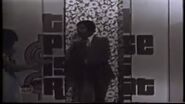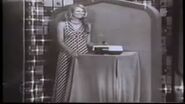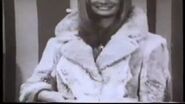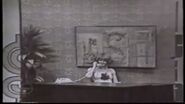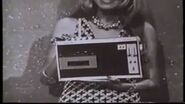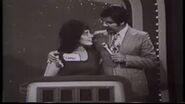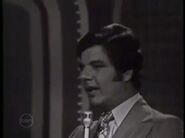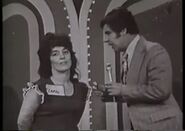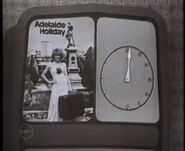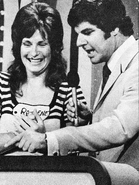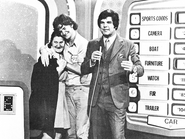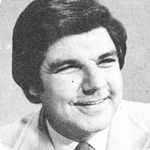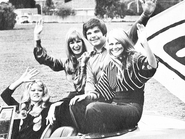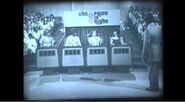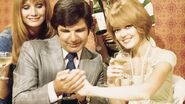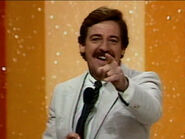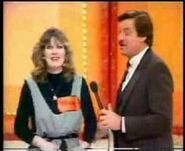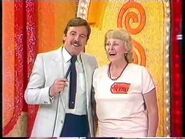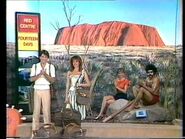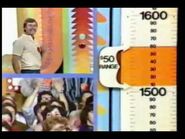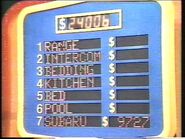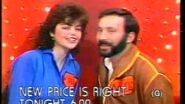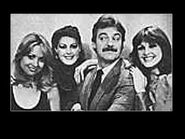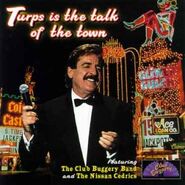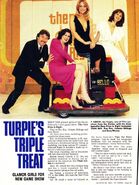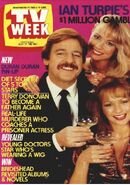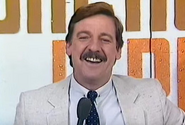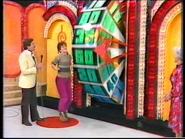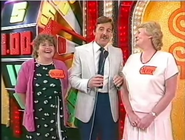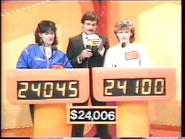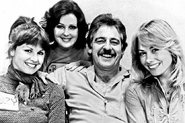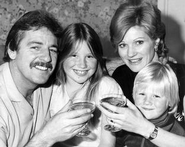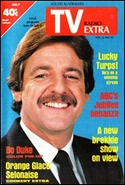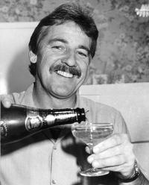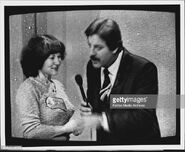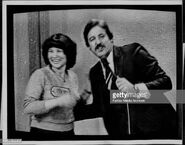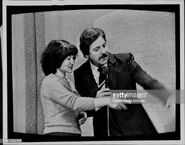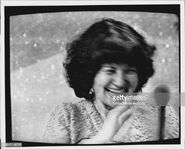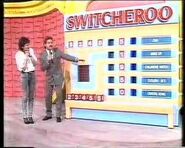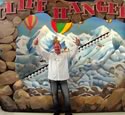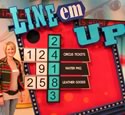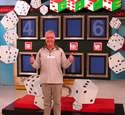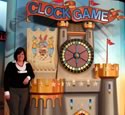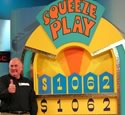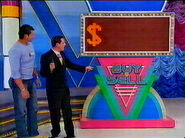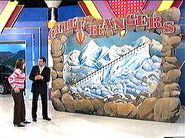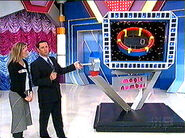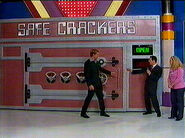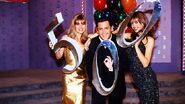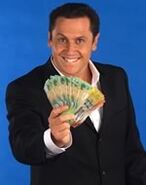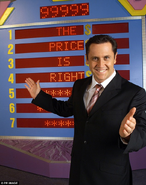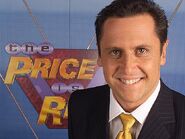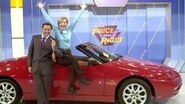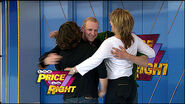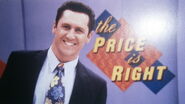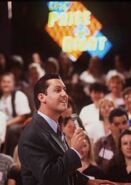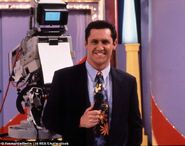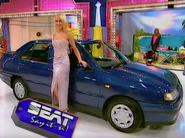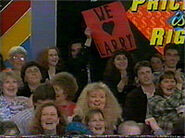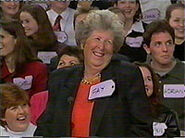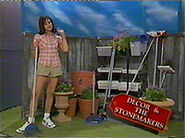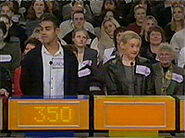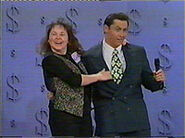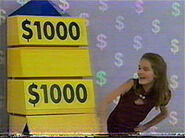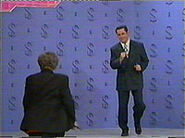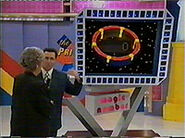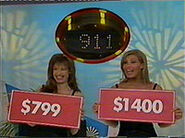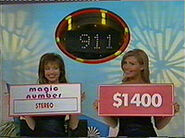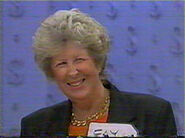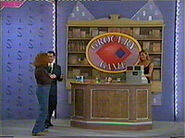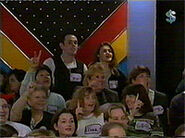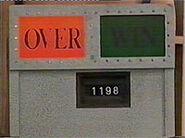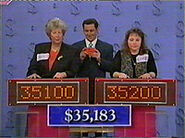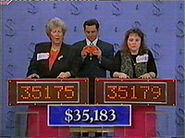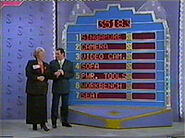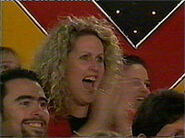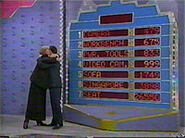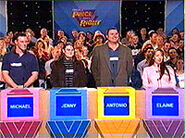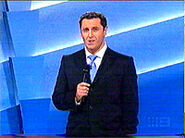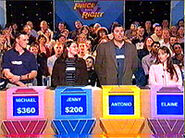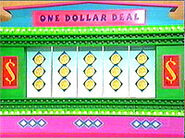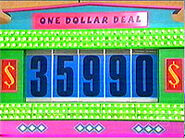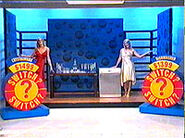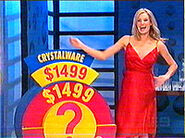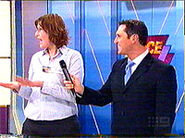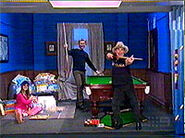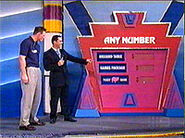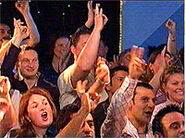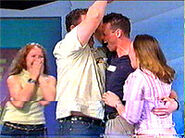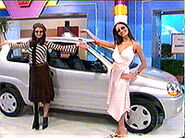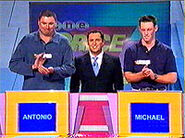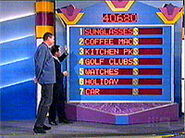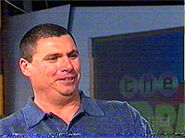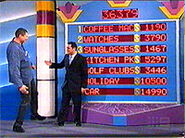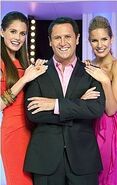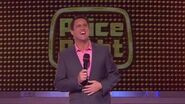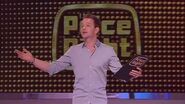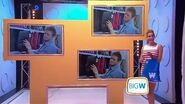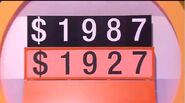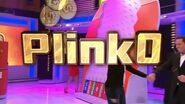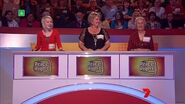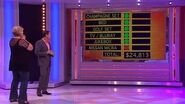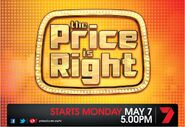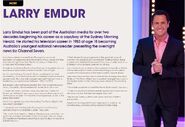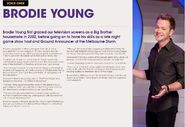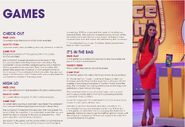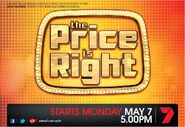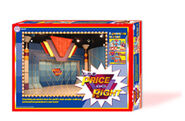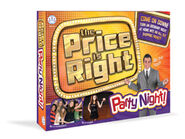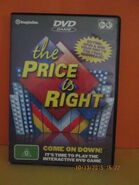| Hosts | |
| Garry Meadows (1973–1974) Ian Turpie (1981–1989) Larry Emdur (1993–2012) | |
| Announcers | |
| Keith Livingston (1973–1974) John Deeks (1981–1985) Gavin Wood (1989) Shawn Cosgrove (1993-2005) Brodie Young (2012) | |
| Broadcast | |
| Network Ten (Daytime): 5 February 1973 – 27 September 1974, 2–13 December 1974 Network Ten (Primetime): 30 April 1973 – 13 September 1974 (initially aired only in Melbourne)Seven Network (Daily): 7 September 1981 – 14 June 1985Network Ten (Weekly): 29 July – 28 October 1989Nine Network (Daily): 13 December 1993 – 2 October 1998Nine Network (Daily): 23 June 2003 – 24 November 2005Seven Network (Daily): 7 May – 19 December 2012 | |
| Packagers | |
| Grundy Organization (1973-2005) FremantleMedia Australia (2012) | |
The (New) Price is Right was an Australian television game show based on the long-running U.S. game show of the same name that had been produced in a number of different formats. Keep in mind that this is not to be confused with the original 1957 show of the same name.
Rules[]
As with the original series, four contestants competed. A prize was shown and each player would give a bid for the item. Contestants had to bid in dollars and not cents (as the retail prices were rounded off to the nearest dollar) and could not bid the same amount as any player bid previously for that item. The contestant who bid closest to the actual retail price of the prize, without going over, won the prize and advanced on to the stage for an individual pricing game. A contestant that bid the exact price also received a cash bonus ($50 during the 1980s and $100 during the Emdur versions). If all four contestants overbid, they all had to bid again, lower than the lowest bid. Four initial contestants were chosen from the audience at the start of the show to play the first One Bid round and bid in order from left to right; before each subsequent One Bid round, a new contestant was chosen from the audience to replace the previous winner (new contestants always went first).
Each winner of the One Bid rounds was called onto the stage to play a pricing game to play for an additional prize or multiple prizes.
After a set number of pricing games had been played, the two on-stage contestants with the greatest winnings, or the two who won a qualifying game, competed in the Showcase Playoff.
Showcase Playoff[]
The two winners were shown a series of between seven to nine prizes. Afterwards, they were given a range, typically of within $100. Within this range was the actual price of the Showcase, which was shown to the home viewers. Starting with the player with the highest total between the two, the players alternated giving bids, with the host saying whether the actual price of the showcase was higher or lower than the previous bid. This kept going until the price was guessed.
The player who guessed the exact price then had to place all the prizes in order from least to most expensive. The price of the most expensive prize, usually a car, was revealed at the outset to give the player some help. If the player placed all the prizes in the proper order, they won the showcase.
The Different Versions[]
Network Ten with Garry Meadows (1973–1974)[]
Little is known about this version, except that in true Grundy tradition, the set and logo (albeit with a smaller dollar sign) were carbon copies of the American set and logo, although the music is a derivative. As in the American version's half-hour format, three games were played and the top two winners advanced to the Showcase Playoff which involved alternating bids within a $50 price range. The winner of the playoff became one of the first four contestants on the next night.
This version was so successful, that it moved from a daytime slot to a prime time slot.
This was also the first foreign version of The Price is Right, having debuted five months after the original American version.
Seven Network (1981–1985)[]
The series was revived for the Seven Network on 7 September 1981, hosted by popular singer Ian "Turps" Turpie, with future Wheel of Fortune announcer John Deeks behind the mic.
While it continued the tradition of a similar set and logo to the American version (a slimmer version of that version's 1972–1973 logo in this case), and another derivative of the American theme, this version had some drastic differences from the Meadows version.
The big difference is that at some point in the run, they invoked a "carryover champion" format, removing one of the three games played in favor of the American version's Big Wheel (a.k.a the Showcase Showdown). Unlike in America, only two players competed, with the one with the smaller winnings spinning first.
Each contestant spun a large wheel (the "Big Wheel") which was segmented and marked with values from five cents to a dollar, in increments of five cents. The wheel had to make one complete downward revolution for the spin to qualify and it had to be spun again if it failed to do so. The winner of the Showdown was the contestant who spun the highest value closest to $1 in one spin or the total of two spins without going over. A contestant whose score exceeded $1 was eliminated from the game. In the event the first contestant went over $1, the second contestant automatically advanced to the showcase, but would spin once to see if they could get $1.
Spinning $1 in one or two spins won a bonus prize. In the event of a tie, a spin-off was held in which each contestant was given one spin.
The winner of the Showcase Showdown faced the champion (who was denoted with either a blue or pink jacket embroidered with "Champion" on it) in the Showcase Playoff, played the same as above. Whoever guessed the exact price was guaranteed to return on the next show, regardless of whether they won the Showcase or not.
There was no limit, champions stayed until defeated, with the longest reign being six shows, and in turn, a grand total of over $66,000, including four cars.
List of Pricing Games played during Ian Turpie's tenure on Seven[]
- Any Number
- Bargain Game
- Bonus Game (Unlike the American version, winning all four prizes won the bonus and a chance at $50 by guessing where the bonus was).
- Bullseye
- Card Game
- Check Game
- Check Out
- Cliff Hangers
- Clock Game
- Danger Price
- Dice Game
- Double Prices
- Five Price Tags
- Give Or Keep
- Grocery Game (used the American range of $6.75-$7)
- It's Optional
- Hi-Lo
- Hole in One
- Lucky $even
- Money Game
- Most Expensive
- Penny Ante
- Pick a Pair
- Poker Game
- Race Game
- Range Game ($50 range)
- Safe Crackers
- Shell Game
- Squeeze Play
- Switcheroo
- Take Two
- "Trader Bob"
- Temptation
- Ten Chances
- Three Strikes
Network Ten with Ian Turpie (AKA "TV Australia", 1989)[]
The show returned in 1989 for an hour-long version, again hosted by Turpie airing Saturday nights on Network Ten as part of the Network's attempted revamp that year as "TV Australia"; however, it only lasted 12 episodes. This version bucked the trend of copying the American set/logo/music, and instead using elements that would be more well known on the following version.
This version was an hour long, with two games, then the Big Wheel ($1 still earned a bonus prize), then another two games, and finally the Showcase Playoff.
List of Pricing Games played during Ian Turpie's tenure on Ten[]
- Any Number
- Cliff Hangers
- Clock Game
- Credit Card
- Dice Game
- Double Prices
- Five Price Tags
- Grocery Game
- Hole in One
- Lucky $even (The game expanded to five-digits and there was no free digit).
- Make Your Move
- Money Game
- Pathfinder
- Race Game
- Range Game
- Safe Crackers
- Squeeze Play
- Switcheroo
- Temptation
Nine Network (Larry Emdur)[]
1993–1998[]
The Price Is Right was revived again from 1993 to 1998 on Nine Network, hosted by Larry Emdur with announcer Shawn Cosgrove. The show returned to the format of the 1981–1985 version, with no "carryover champions".
One thing to note about this version is it's 500th episode. Besides a cameo from then-American host Bob Barker, and the perfect bid bonus raised from $100 to $500, the format was altered for that day. Each One Bid winner played the Showcase Playoff minus the bidding portion, instead just arranging prizes. As always, the two top winners played the standard Showcase Playoff, this time for a Showcase worth an even $100,000.
2003–2005[]
The show returned on 23 June 2003 on the Nine Network, again with Emdur (earlier news reports had speculated that former A*mazing host James Sherry would be the star, but it never happened).
At first it retained the original format, but a year later, to combat the Seven Network's hit Deal or No Deal, the show combined elements from both Turpie versions; it expanded to an hour, with two games, then the Big Wheel (with $1 winning $1,000 as in the American version), two more games, then the Showcase Playoff, this time renamed the "Super Showcase", with an eighth prize added, and valued at over $100,000.
Not too long after that, the Showcase expanded to nine prizes, and renamed the "Mega Showcase". The ninth prize was a unit at the Ramada Pelican Waters condominium on the Gold Coast, which was under construction at the time, and was valued at over $455,000. This pushed the total of the "Mega Showcase" to between $500,000-$640,000.
To compensate for the increase, cash bribes were offered at random points in the reveal of the prices. These bribes usually ranged from $1,000 (if the player was way off), to $50,000 (if they had everything in the right order). In addition, so as not to sway players, the price of the car was only revealed at the conclusion of the round.
Cars given away on the mid-1990s version of the program were provided by Daihatsu and later SEAT. Early in the 2003 run, Suzuki cars were used for both the pricing games and the Showcase; once the Mega Showcase was introduced, Citroën cars were used for the pricing games (and as part of the budget increase, were offered more frequently), while Alfa Romeos were used for the Showcase. Holden replaced Citroën in 2005.
Towards the end of the run, the show reverted to a half hour, but still only played two games followed by the wheel. The Showcase's bidding portion was removed, the price revealed after the prizes were announced. The condo was replaced with a random cash prize of over $100,000; the Showcase was renamed the "Monster Showcase" in this instance.
A win of $664,667 was a world record for the Price franchise that stood until February 2008, when Adam Rose won US$1,153,908 on the U.S. version's "Million Dollar Spectacular".
The programme ended on 24 November 2005 and Larry Emdur then signed with the Seven Network to host Wheel of Fortune, which was then cancelled after only a few months.
List of Pricing Games played during Larry Emdur's tenure[]
- Any Number
- Bump
- Buy or Sell
- Cliff Hangers (the climber was named "Cliff" and he had a dog named "Spot" climbing with him)
- Clock Game
- Cover Up
- Dice Game
- Five Price Tags
- Flip Flop
- Grocery Game (range was $10-$10.50)
- Hole in One
- Line 'Em Up
- Magic #
- Make Your Move
- Money Game
- One Away
- One Dollar Deal (five-digit Lucky $even)
- Race Game
- Range Game
- Safe Crackers
- Side by Side
- Split Decision
- Squeeze Play
- Switch?
- Switcheroo
- Temptation
- 2 for the Price of 1
- Two Price Tags
Pricing Game Pictures[]
Models[]
The models of The Price is Right often drew as much interest as the show itself. Many of the models have become celebrities in their own right. Some of these models include:
- Danielle Atkin
- Kimberley Chen
- Chris Frankish
- Kellie Johns
- Kathy Lloyd
- Elise May
- Roz Roy
- Jacqee Saunders
- Samantha Steele
- Sarita Stella
- Susan Thorne
Other Pictures[]
Random Pics[]
Pics from a 1996 episode[]
Pics from a 2003 episode[]
Seven Network (2012) (Larry Emdur)[]
The Price Is Right was revived again in 2012 on Seven Network, again hosted by Larry Emdur with announcer Brodie Young. This version used the logo and look of the 2009 French version called Le Juste Prix (The Right Price) but in a smaller scale. It was also considered by many fans as one of the worst revivals of all-time.
Speculation of an Australian revival started when Emdur, during a winter 2011 trip to Los Angeles (July), visited CBS Television City, where Drew Carey (who was the host of the American version) had Emdur call down a contestant and host Cliff Hangers during a taping in July for an episode that aired in December 2011. In addition, George Gray (who was the announcer for the American version) appeared on Rove LA, an Australian chat show also taped at CBS Television City (Studio 56) and has featured a Price prop appear on the show often.
In 2012 it was reported in various local newspapers in Melbourne and Sydney that the Seven Network were looking at reviving the franchise.
On 28 March 2012, the Seven Network confirmed that the show would return with host Larry Emdur and would air on the Seven Network.
On 4 April 2012, production began, with its debut on 7 May at 5:00pm.
The first episode paid tribute to former host Ian Turpie who had just died from throat cancer earlier that month.
While the show reverted to its half hour format with no wheel, another drastic change was made. The One Bid rounds were eliminated; contestants went straight to their pricing game.
In addition, compared to the second half of the previous run, the budget was slashed drastically. The show took on sponsorship from department store "Big W", which also supplied the bulk of the prizes, and also offered shopping sprees in most games. By the end, non-Big W prizes were offered.
As before, the two players with the highest earnings played the Showcase Playoff. In the event of a tie, a one bid round would be played.
For the first few weeks, a $1,000 range was offered in the Showcase Playoff, it was soon decreased to its standard $100.
Only six prizes were presented in the Showcase (the only time cars were offered), and the player had 40 seconds to make their selections, when time ran out, those not moved would be locked in.
The show was cancelled on 7 December 2012.
In the same year, the American website Game Show Garbage was given the Patrick Wayne Award at the time (See the "Links" description for details).
Pricing Game Lineup[]
The most recent series had 17 games on rotation, including:
- 3 Strikes
- Check-Out
- Cliff Hangers
- Danger Price
- Hi-Lo
- Hole In One
- It's In The Bag (no doubling money feature unlike the American version)
- One Away
- Pick A Pair
- Plinko (played for a shopping spree, board was $50-$100-$250-$0-$1,000-$0-$250-$100-$50)
- Push Over
- Safe Crackers
- Secret X
- Squeeze Play
- Take Two
- Walk the Line (Grocery items are shown, guess whether each price is higher/lower than the previous one)
- Wonderwall ("Punch-A-Bunch" in the United States, played for a shopping spree, $5,000 top prize)
Pictures[]
Pics from a 2012 episode[]
2012 Press Kit[]
Music[]
1981-1985 Typewriter Prize Cue - "The Typewriter" by Leroy Anderson
Merchandise[]
Board Games[]
Board Games based on The Price Is Right have been made by Crown & Andrews, including a "Party Night" version.
DVD Game[]
A DVD game was released by Imagination min the mid-2000s, although it incorporated the 1990s version's logo on the front cover.
In Popular Culture[]
Fictional scenes from The Price Is Right were featured in the 1997 comedy film The Castle, showing the narrator's sister appearing on the show, winning the amount of $4,321.
The tv show called The Checkout in 2015 parodied The Price is Right as The Consumer Price is Right or Consumer Price is Right based on the 2003 Larry Emdur version.
Links[]
Official website 03' era (via Internet Archive)
Official Facebook Page (2012 era)
The Price is Right is back!! and we want you to Come on Down!!
COME ON DOWN LARRY! THE PRICE IS RIGHT RETURNS TO TV
The Price Is Right (2012) - Seven West Media
#127 - The Australian Price is Right Revival
YouTube Videos[]
Meadows era (1973–1974)[]
Turpie era (1981-1989)[]
The New Price is Right (1981-1985)[]
The New Price is Right promo 1983
HSV-7 Promo for "The New Price Is Right", 1984
HSV-7 Promo for "The New Price Is Right", 1984 (2)
HSV-7 Promo for "The New Price Is Right", 1984 (3)
HSV-7 Promo for "The New Price Is Right", 1984 (4)
The Price is Right (1989)[]
Channel 10 The Price Is Right promo with Ian Turpie
ATV10 - The Price is Right Promo -Australian Ad 1990
Emdur era (1993-2012)[]
1993-1998[]
The Price is Right Promo (9 Victoria)
2003-2005[]
The Price is Right promo - September 2003










